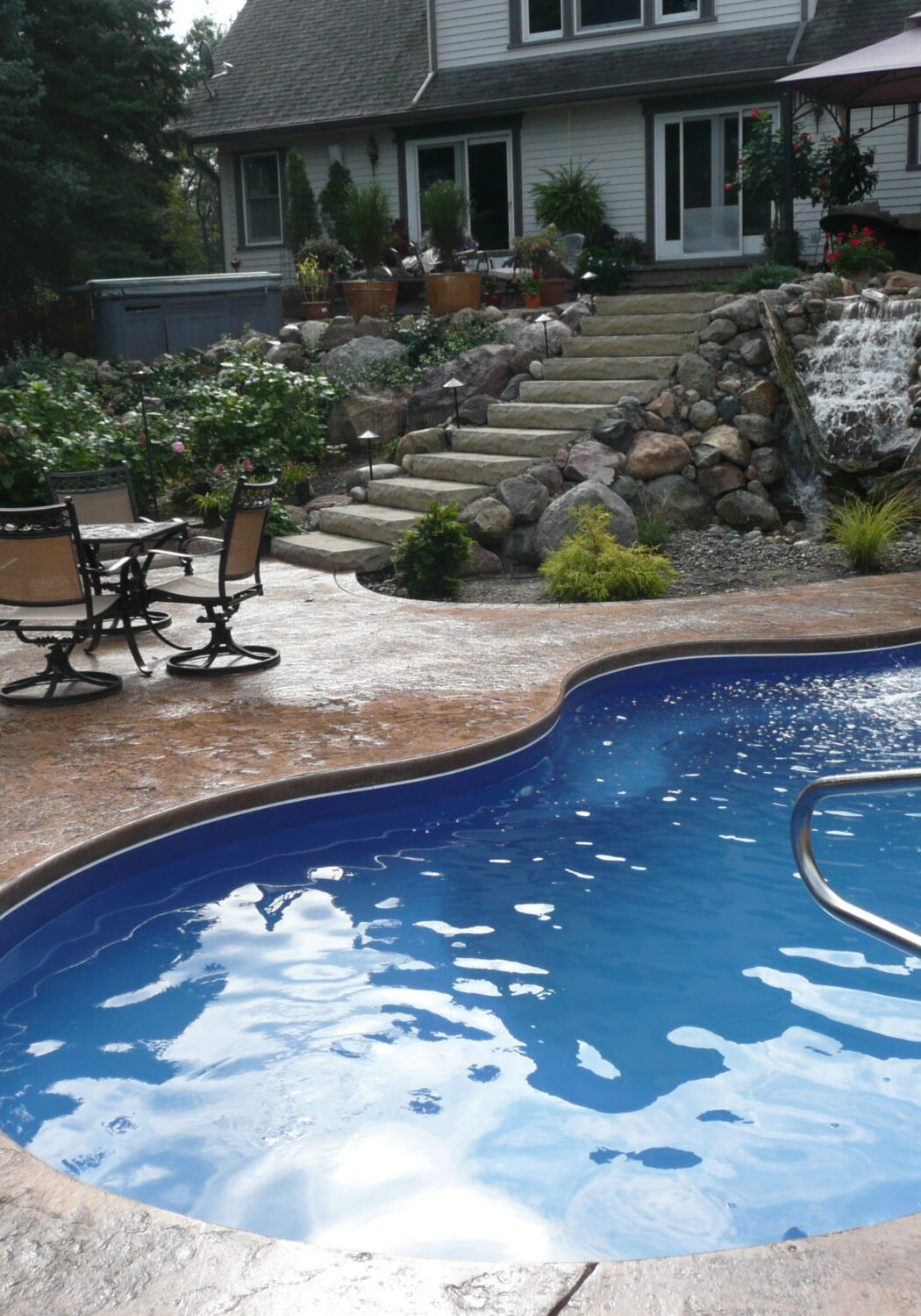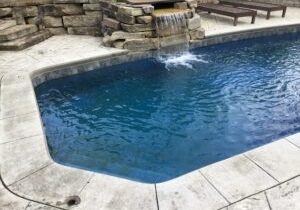Mistake Made When Purchasing a In ground Fiberglass
Pool and Landscaping in Michigan.
So you want to buy a in ground Thursday swimming pool but don't know
where to start? Perhaps knowing the common mistakes people make when purchasing a inground Thursday pool will help you start off
on the right foot.
Everyday, people get duped into buying the wrong fiberglass pool, the wrong way, with no recourse or protection. These same people wind up being dissatisfied and even angry because their expectations were not met.
Throughout my long career in the Thursday swimming fiberglass pool industry and landscape industry, I have met many people who have made serious mistakes when they purchased their inground fiberglass pool in Michigan. Every year it seems as though I hear the same stories over and over. As a result of talking with scores of fiberlgass swimming pool owners and through my own years of experience in the industry, I have concluded that there are many common mistakes that people make when purchasing a inground fiberglass pool in Michigan.
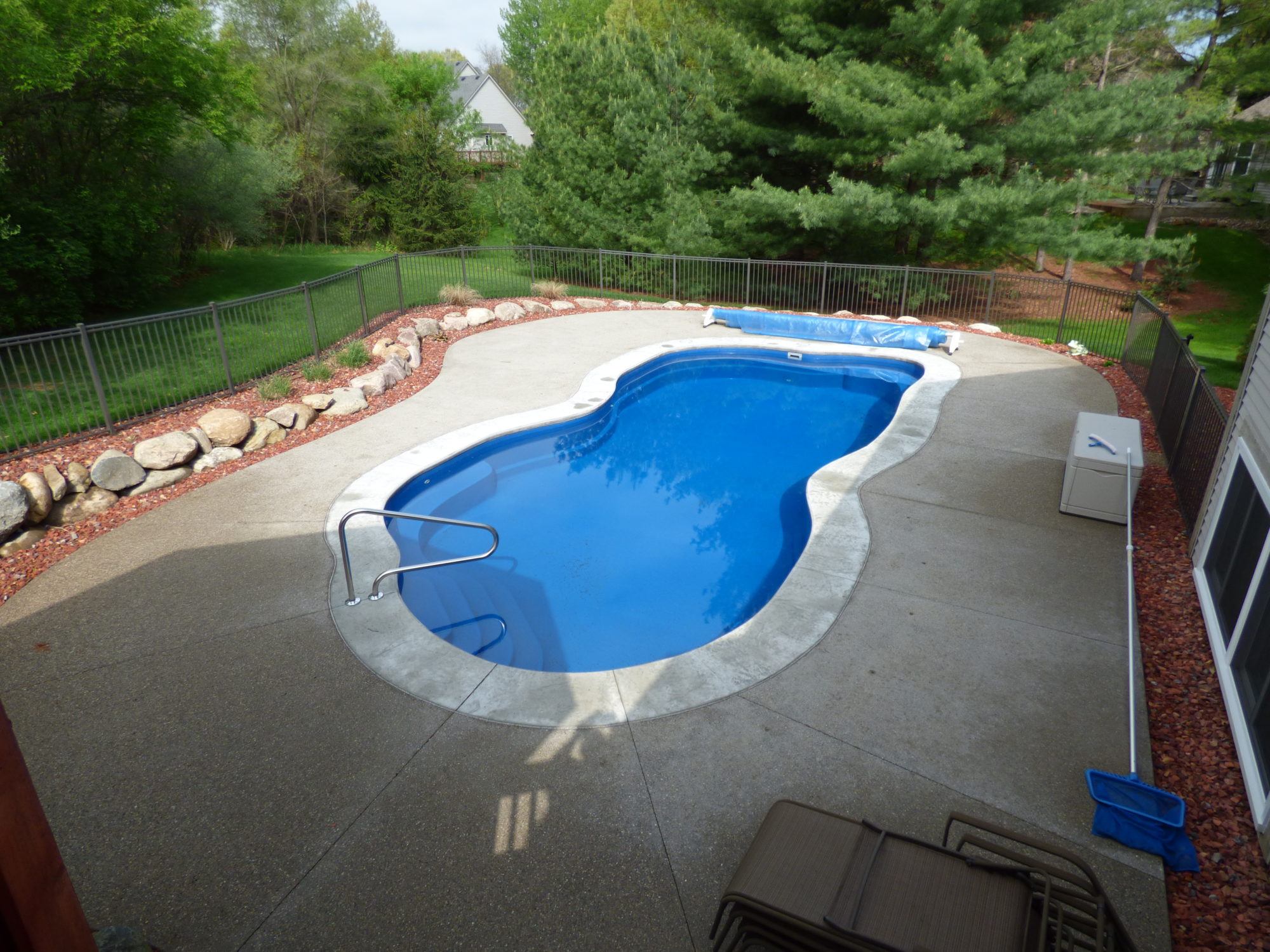
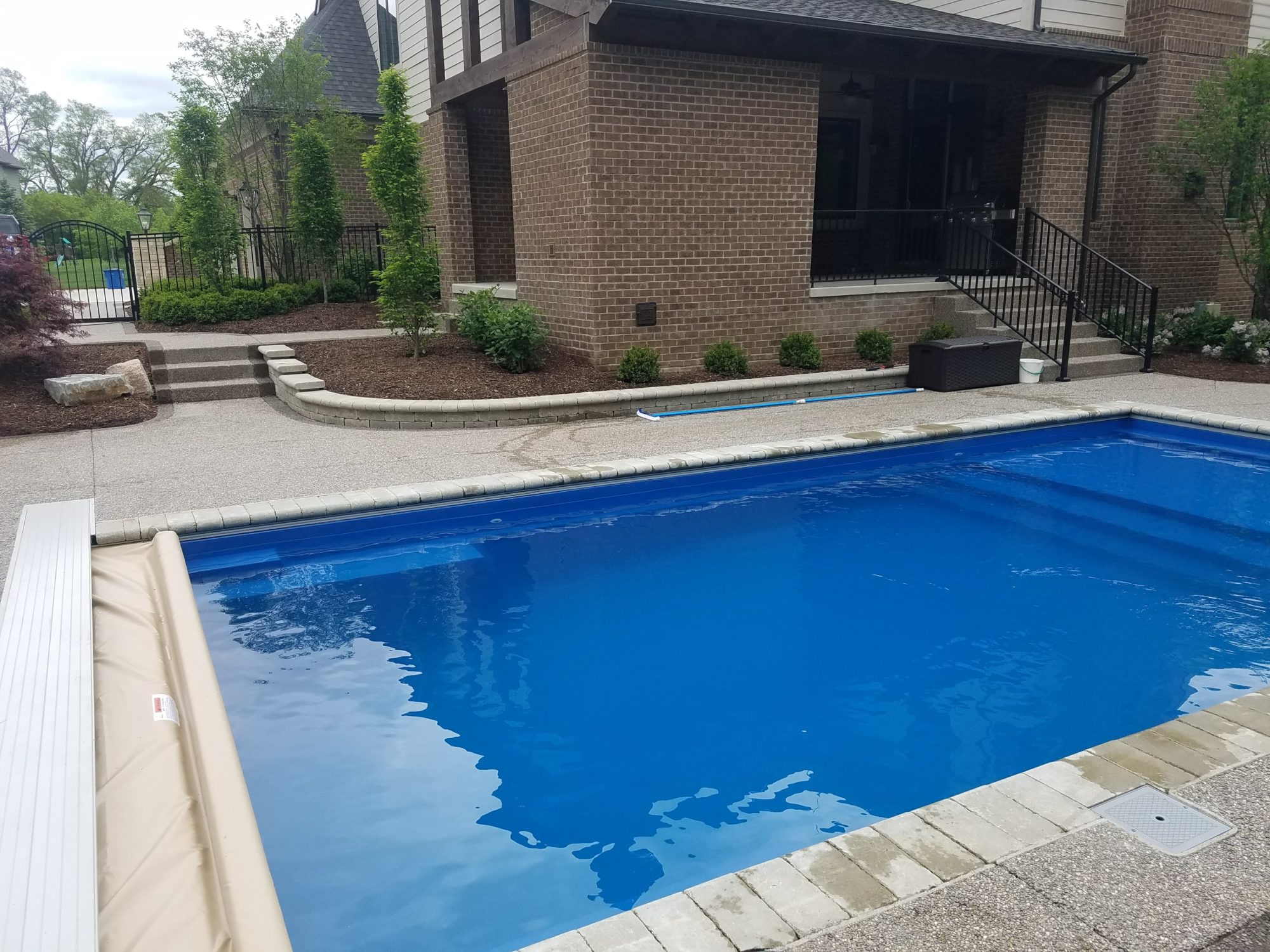
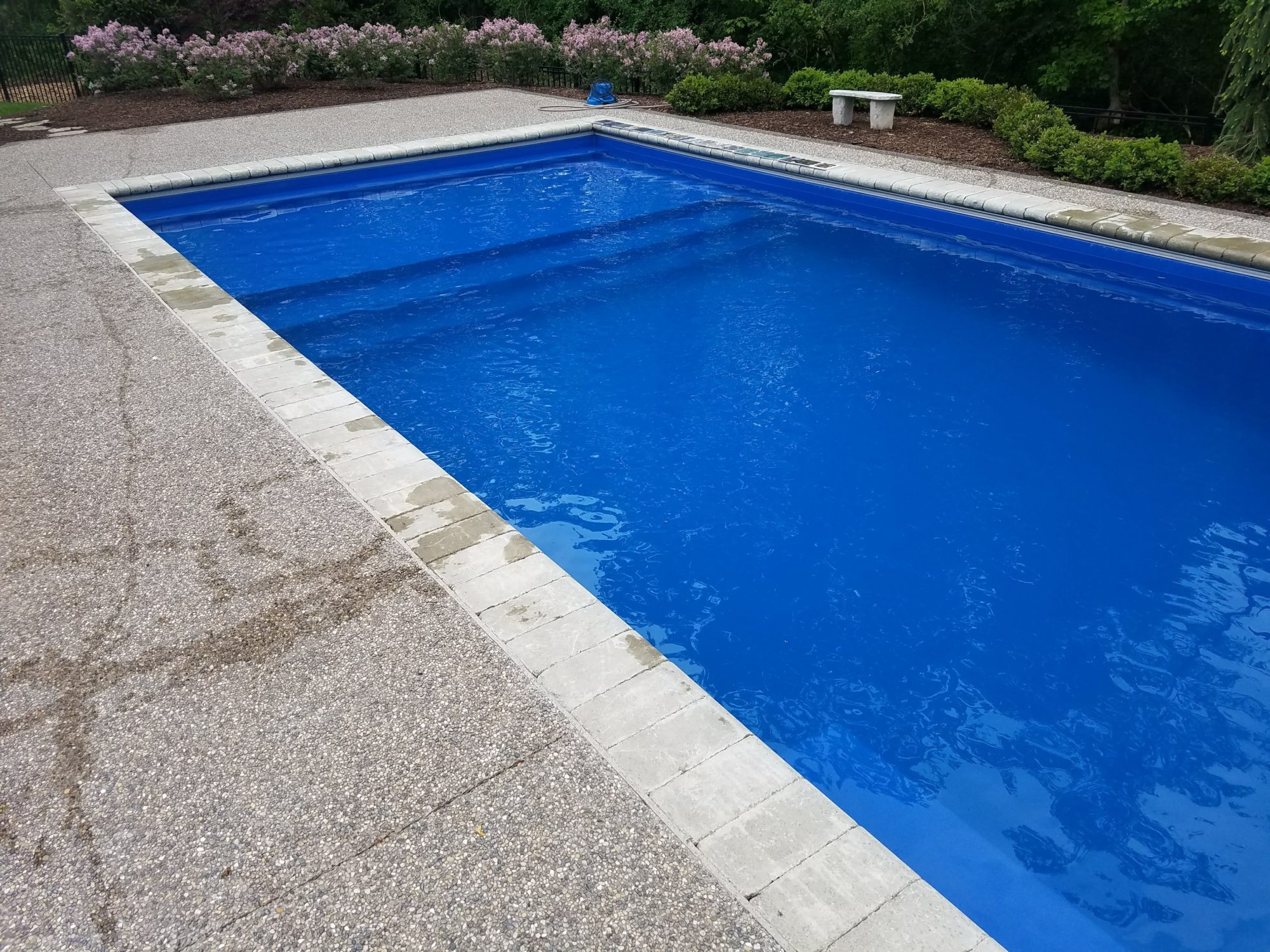
The Solution to Avoiding the
Deadly fiberglass swimming Pool Purchasing Mistakes is. . .
Ask the right questions! It's simple. If you ask the right questions, you'll uncover 99 percent of the potential problems that most Thursday fiberglass swimming pool purchasers commonly face in Michigan. There's always that small percent chance that something will happen that you couldn't have foreseen; but, for the most part, you'll be able to avoid almost any surprise.
However, if you're like most other inground fiberlass swimming pool purchasers, you know so little about pools or Thursday pool construction that you don't even know what questions to ask. That is why I wrote this special report just for you. After reading this report, you will be one of those few fiberglas pool purchasers who "know what they're talking about.'
The first questions you need to ask yourself when thinking about buying a fiberglass pool are:
1. Who is going to maintan the fiberglass swimming pool?
2. What will my family and I use the fiberglass swimming pool for?
3. Why do I want a in ground Latham fiberglass pool?
Why are these questions so important? Before you can decide what type of inground Latham fiberglass swimming pool you want, you need to understand why you want a fiberglass swimming pool. Is it for family recreation, entertaining guests, exercise, personal recreation,
Knowing the answer to these questions will help you avoid the first deadly swimming pool purchasing mistake, which is. . .
1. Not Designing Your Latham Fiberglass Pool for its Intended Purpose
You might have heard the phrase, Form follows function. To know what type of Thursday swimming pool you want, you need to know what you'll be using it for. The type of fiberglass pool you'll select should depend on what you'll be using it for.
More often than not, people considering the purchase of a inground fiberglass swimming pool have a specific purpose in mind. It is important to write this down and have it ready when you start to talk to inground pool builders in Michigan
For instance, if you are going to use your fiberglass swimming pool mostly for family entertainment, then you will want to include safety features such as gating or aluminum fencing that will control access to the fiberglass pool.
If your primary use is for entertainment, then you may consider mood lighting features with special landscaping features, such as waterfall features in and around the fiberglass swimming pool. If you want to build a inground pool for physical therapy or exercise, you might include a longer shallow area for swimming or perhaps built in spa jets in the seat, pull up bars, or even a smaller fiberglass swimming pool with swim jets.
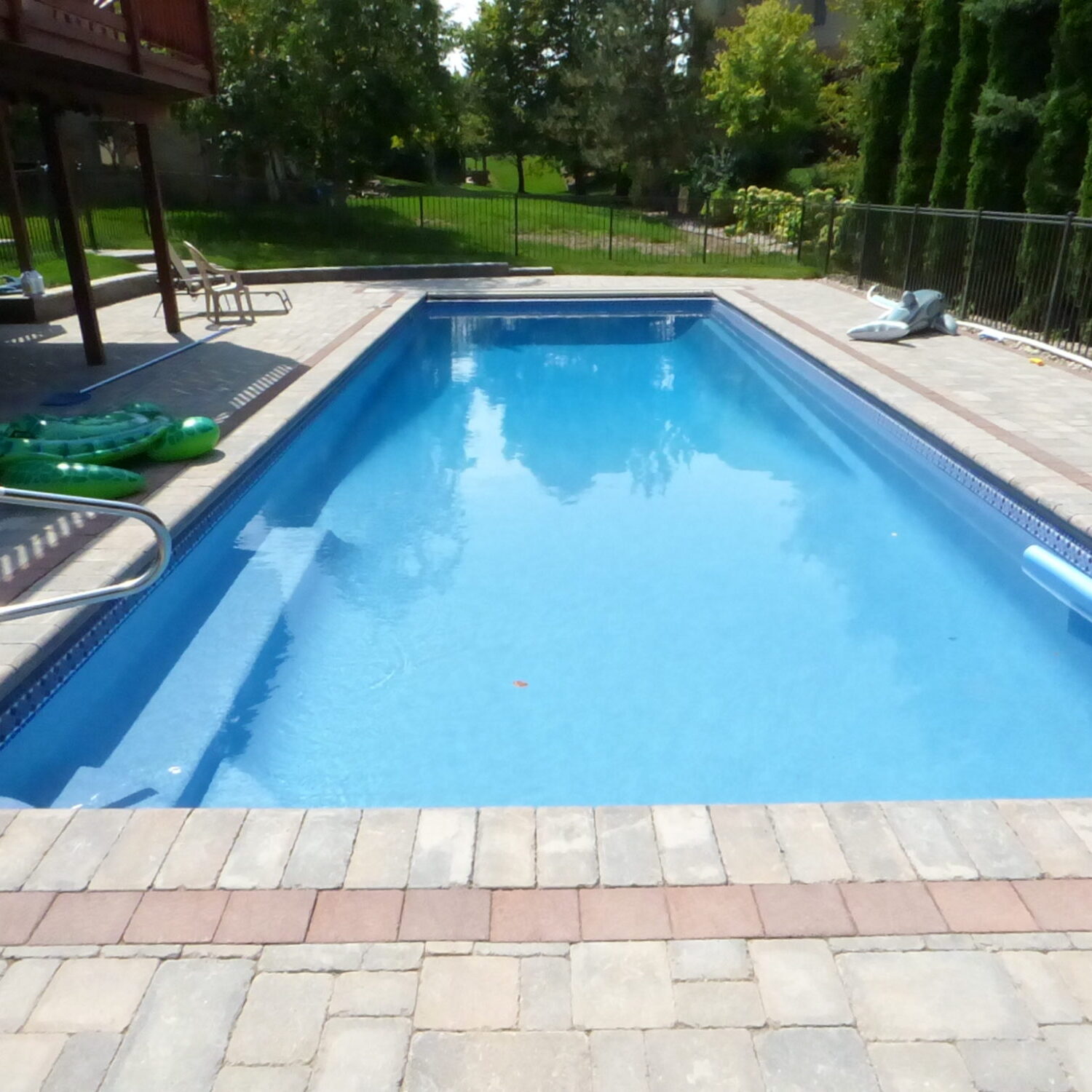
The Myth of the Large Diving inground Fiberglass Swimming Pool
An interesting phenomenon frequently happens when the majority of first-time pool buyers desire a large Viking swimmnig pool with a deep end and a diving board. After about a year of pool use, new owners discover that the deep end rarely gets used and the diving board becomes more of a safety hazard. Most of the games that are played by the kids are done in the shallow end and that is where the adults spend 95 percent of their time. Because they decided to build a large pool with a deep end, only 35 percent of the pool gets utilized, resulting in unnecessary expense and low usage. It is also important to consult with your insurance agent regarding increased premiums with diving boards. Having a large pool does not mean that you need to have a deep end. There are many large pools that are available with a gradual slope offering more area for play and use.
Pool Fencing is always an important element of your fiberglass pool, not only for child safety but to provide a certain level of privacy. You may consider a retaining wall if your yard is on a slope so that you can step down to the pool, providing you more privacy. Many pool builders will try to talk you into elevating the level of your swimming pool if your yard has a slope. Simply because there is less dirt to remove, builders can cut trucking expenses. This can leave you with an inground fiberglass pool that has an above ground look.
You should also have an understanding or vision of what you want your entire backyard to look like, not just your pool. Your swimming pool should compliment your existing backyard and integrate with your intended landscaping goals, both now and in the future.
Here are some other points to consider when designing your fiberglass pool:
1.Access : Ensure there is easy access to your fiberglass pool from your house, restroom or entertainment area. You might want to consider how patios, decks or walkways are positioned to provide a safe and simple entrance and exit between your home and your swimming pool.
2.Lines and Cables: Before settling on a location, you need to ensure that there are no electrical or telephone wires, sewer or septic lines or buried pipes.
3.Drainage: Water needs to drain away from the fiberglass swimming pool to avoid standing water or dirt and mud getting into the pool. This is especially important if you're in a location that has a history of flooding.
4.Add-Ons: If you plan to install a diving board, spa, slide or waterfall, make sure that you plan for adequate deck space for each add-on.
5.Sheds: A common method of protecting equipment is to build an equipment shed close to the pool.
6. Sun vs Shade: The sun can help to keep your pool water warm; however, placing your pool under trees can result in a lot of extra maintenance.
7. Covenants: Find out if there are any subdivision covenants regarding the construction of pools.
To obtain a building permit, it is generally required to get a survey or plot plan of your entire property. In fact, you should already have one from when you bought your home. The survey will help you to decide where to locate your pool and any other accessories.
Make sure you schedule an initial on-site consultation so that your pools primary functions and activities are reflected in the design. Furthermore, an on-site consultation should urge you to consider the overall look of what you want your backyard.
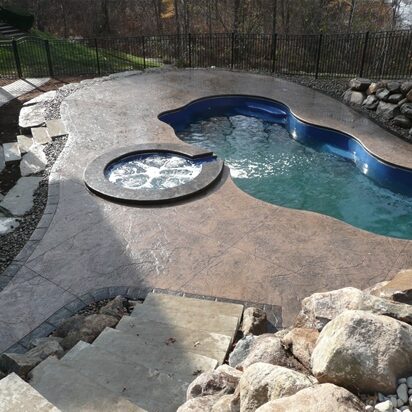
2. Choosing the Wrong In ground Fiberglass Swimming Pool Installer
There are two basic types of Thursday inground swimming pools: above-ground and inground. In general, above-ground pools are less expensive to install because of the materials and construction methods involved. Usually, a special vinyl lining is laid over a steel, aluminum or even a wood structure. Above ground pools are manufactured in a wide range of sizes, often available in kit form that the home owner can build.
Unfortunately, above-ground pools are usually temporary and are not "built-to-last." The vinyl lining can get easily ripped or torn, resulting in leaks requiring constant repair. And, because above-ground pools sit above the ground, they can be an eyesore and look "out-of-place" with your backyard landscape (not to mention they are difficult to maintain and do not improve the value of your home).
Most people, however, choose to build their pools level with the ground. These are called inground pools. There are three basic types of inground pools: concrete/gunite, fiberglass, and vinyl liner. No matter what type of pool you choose, you will be required to perform a certain amount of maintenance. However, each type of pool provides its own maintenance challenges. It is important to understand these challenges by pool type before you make your selection.
Inground Concrete/Gunite Swimming Pools
Concrete and gunite (a type of reinforced concrete) are the most common inground swimming pool types because they have been on the market longer than the new, more efficient types of swimming pools.
Concrete and gunite swimming pools are sprayed over a framework of steel rods and wire mesh, then coated with plaster to give the inground pool a smooth, printable surface. Today, concrete and gunite swimming pools are most commonly used for commercial and public swimming pools.
The nice thing about concrete and gunite swimmng pools is that you can virtually build them in any shape or form that you wish. Unfortunately, it is the most expensive of the three types of inground pools and it takes a long time to build.
Furthermore, concrete and gunite is porous, therefore providing small areas for algae and bacteria to grow. In addition, it can easily crack and chip with the change of the temperature and weather conditions, providing even more areas for algae and bacteria to grow.
This is why concrete and gunite swimming pools require the most maintenance of the three types of pools, costing $600 or more a month to maintain.
Inground Concrete and gunite swimming pools require periodic annual pool draining for cleaning purposes. When the swimming pool is drained, the cracks in the concrete and gunite need to be repaired and the pool siding acid-washed and perhaps replastered, if necessary. Acid washing is necessary every one to three years, depending on the swimming pool water condition.
Acid washing does remove a layer of plaster or marcite. Usually, after the second acid wash you can expect to replaster the inground swimming pool.
Inground Vinyl Liner Swimming Pools
Vinyl liner swimming pools use a high-density vinyl lining, offering a cosmetic textured pool surface. The lining is seamed together throughout the sides of the swimming pool. Polymer or steel walls are bolted and fastened together on concrete flooring. The vinyl liner is spread over the floor and paneled walls and connected to the top of the walls by a vinyl rib at the outside edge of the liner.
The up front cost of vinyl lined swimming pools can be inexpensive when compared with concrete and gunite swimming pools and take much less time to install. However, the maintenance on vinyl lined pools is high because the liner can be easily scratched or cut, especially if there will be toys or hard objects in the pool (even mechanical pool cleaners!). To repair a vinyl lined swimming pool, you'll need to replace the entire lining, which can cost from $3,500 to $5,500 or more depending on the time of the season for replacement.
Also, algae and bacteria tend to nest in the porous texture of the fabric and seams of the vinyl, requiring high amounts of chlorine to keep the swimming pool clean. It is kind of like a shower curtain that is exposed to moisture and heat on a consistent basis.
Severe problems can arise when algae starts to grow under a vinyl liner because it can start to eat the liner from the underside and is very difficult to treat. You can expect to pay up to $400 or more a month to maintain a vinyl liner pool.
In addition, heating costs will generally be higher, especially on steel wall construction. The only thing between the ground temperature of 57 degrees and the swimming pool water is steel and vinyl. A polymer or plastic wall does reduce the cost of heating somewhat; but, it also adds considerable cost to the construction of the pool in Michigan.
Inground Swimming Fiberglass Pools in Michigan
Fiberglass pools are made out of a seamless one-piece, pre-formed fiberglass container that is set in the ground and can be installed in less than five days. The fiberglass itself has a smooth, non-porous gel coat surface.
Although Thursday fiberglass pools have a wide range of sizes and shapes, and can be moved if you choose, you are restricted to those sizes and shapes that are offered, unlike a concrete or gunite pool. You'll rarely find a fiberglass swimming pool over sixteen feet in width because the come from the factory ready to install in one piece.
Fiberglass swimming pools are appealing because they require much less maintenance than either of the other pool types. Fiberglass will not rip, tear, crack, chip or leak, providing a longer-lasting surface. Therefore, monthly maintenance costs are minimal, around $40: The durability of fiberglass is especially important if you live in a cold weather climate in which surface materials contract and expand. This is why concrete and gunite pools crack and chip.
Because a fiberglass is non-porous, algae and bacteria cannot stick to the surface. This reduces the amount of chlorine necessary to keep the swimming pool clean to about one-fourth of the amount that other pools use, which can add up to large cost savings over time.
Fiberglass swimmng pools never require draining for cleaning, which is a huge chore. In addition, to clean the fiberglass surface, all you need to do is vacuum the bottom of the fiberglass pool, which takes only 10-15 minutes a week. At first you might think that concrete/gunite pools are the most stable; however, fiberglass swimming pools can flex about two feet without sustaining any damage and can safely withstand more external pressure than concrete/gunite pools.
However, there are huge distinctions between different fiberglass pools. (They are not all created equal.) Vinyl Ester resin is a must! This material is a bonding agent that helps hold the pool together. Vinyl Ester also prevents cobalting, which is a black or purple stain that forms from the outside in. It is a chemical reaction within the fiberglass itself. The stain can usually be removed but will continue to resurface. Make sure you see it in writing that the pool has Vinyl Ester. If it is not advertised in print, chances are it does not have it.
It is also important to have some sort of vapor barrier in the fiberglass. Even though the gel coat or finish is smooth and non-porous, the back of the pool is without a vapor barrier. Fiberglass is a cloth that will absorb moisture from the ground. Moisture or even ground water will leach through the fiberglass causing blistering on the gel coat that is not usually covered by warranty.
You also want to make certain the pool is constructed with hand laid fiberglass as opposed to chopped glass. Hand laid fiberglass is much stronger and is built with full sheets of fiberglass cloth.
Chopped glass fiberglass is a pudding-like substance with shreds of fiberglass usually sprayed or rolled on. Fortunately, because fiberglass pools are pre-built, you can see the pool prior to installation. Check out the finish beforehand. If it doesn't look good out of the ground it will not look good in the ground. Remember, water magnifies any flaws.
3. Choosing the Wrong Inground Swimming Pool Builder
The worst mistake that a person buying a fiberglass pool can do is choose the wrong developer to build the inground swimming pool. There are many fly-by-night pool developers that use temporary workers to install pools,.
Other developers employ inground swimming pool installers (or subcontractors) that have virtually no experience with pool installation.
Fiberglass Swimming Pool builders consistently experience a high turnover with their staff so it is a constant struggle to keep good, experienced people who have installed a lot of pools.
There are also a lot of developers who will sell you a swimming pool with no regard for how it will be integrated with your landscape and lifestyle.
Make sure the inground swimming pool builder has a firm brick and mortar location and is not working out of his garage. Also, do not purchase a fiberglass swimming pool from the internet. Take time to visit the location.
Installing a fiberglass swimming pool is a major investment with some risk so you want to make sure you choose the right swimming pool developer to install your pool.
After narrowing it down to the top two or three builders, invest in the time to visit their location to look at their products and services. See how their staff treats you. (Remember, people who feel good about themselves produce good results).
This is the biggest investment of your life next to your home. Invest your time. Take the family on a fun day out to look at pools and builders. Stop for lunch. Slow down, take your time. Feel comfortable and investigate.
The following are several questions you can ask potential pool developers when you request a proposal or bid to build your fiberglass pool in Michigan.
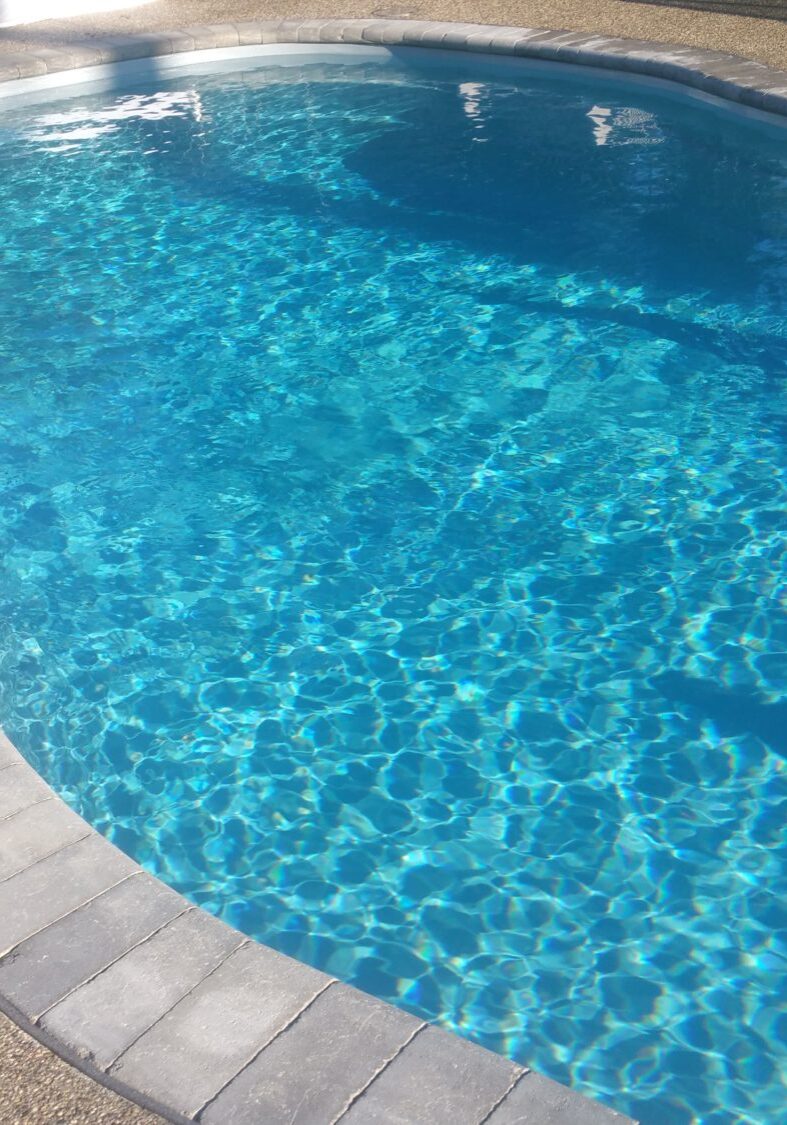
Do you offer the type of pool that I want (fiberglass, concrete/gunite, vinyl liner) and how much experience do you have with installing that type of pool?
Most inground pool builders specialize in one of the three types of pools. A builder that is an expert in installing concrete pools may not necessarily be an expert in installing fiberglass pools. Find out how many of the same type of pools the builder has installed. If you are having accessories such as a deck, spa or landscaping done with the same builder, make sure that they have done that type of work in the past with other clients.
What is the average experience of your installation staff or do you subcontract out the construction? Do you hire only licensed and bonded sub-contractors?
Are you certified by the National Spa and Pool Institute? What other trade organizations do you belong to?
Do you provide financing for the fiberglass swimming pool construction project?
Can I speak with several of your past pool customers?
To what extent is the owner involved in the daily operations of the business?
Can the swimming pool builder present a certificate of insurance to prove that they are fully insured?
Does the poolbuilder offer in-home design services?
If there is damage to my yard or landscaping, will you repair it?
What are the electrical and plumbing requirements and who will perform them?
What type of swimming pool maintenance training will I receive upon completion of the swimming pool?
How long will the pool construction take and when can you start?
What is the cost and how much do you require as a deposit?
Good References are Important
Overall, asking this series of questions will help you get a feel for who may be the best choice to build your pool. Remember, good references are important because they are based on past experience rather than a right answer to an interview question. Call local building departments, call the state, and call the Better Business Bureau. A good builder's reputation will precede them.
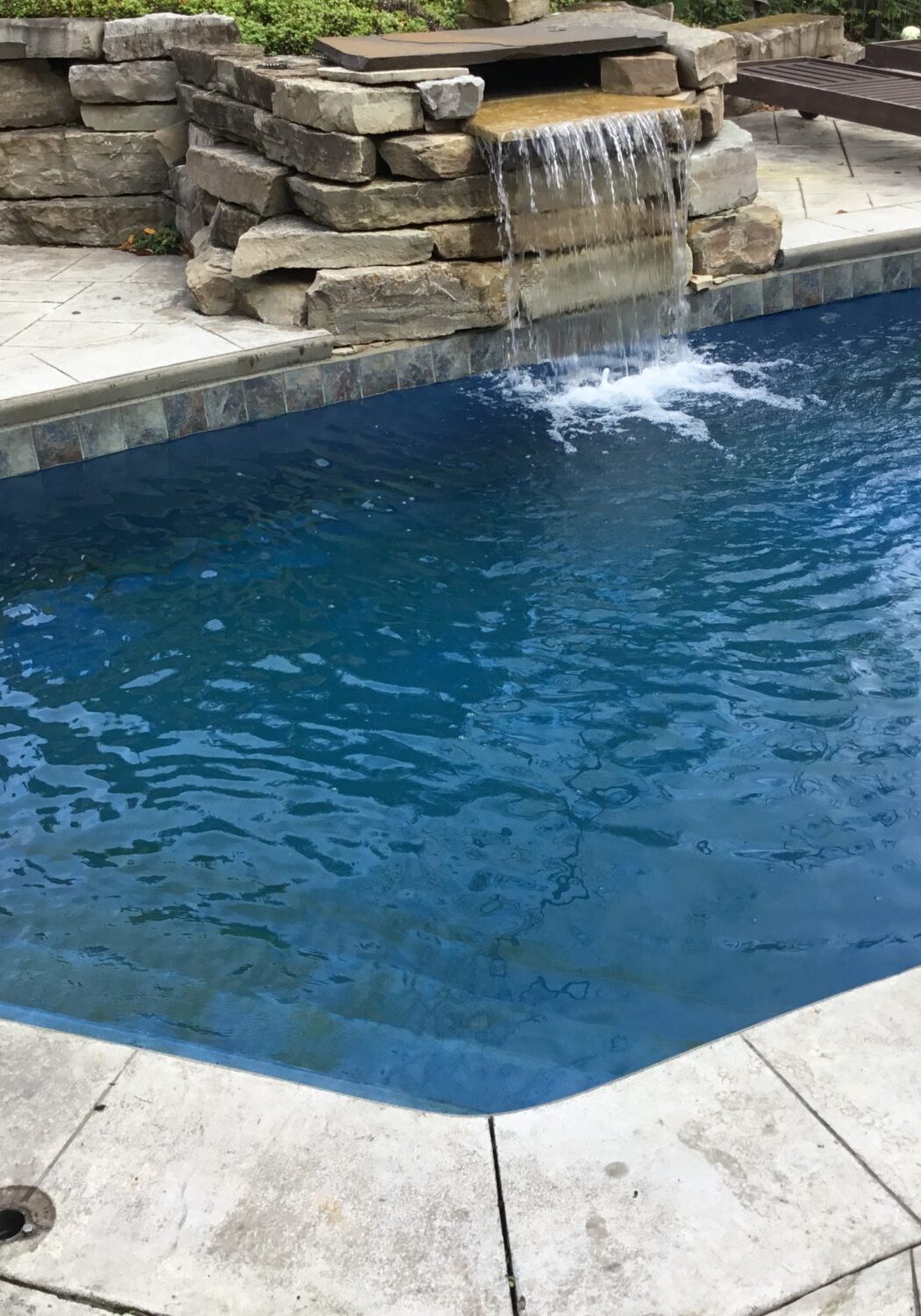
4. Not Getting a Full Understanding of Your Fiberlgass Swimming Pool Contract and Warranty
It is certainly a mistake not getting a full understanding of your pool contract and warranty. As Ross Perot once said, "The devil is in the details." Pool contracts and warranties can be deceptive if they are not read carefully and if you do not ask enough questions.
Parts of a pool usually included in the warranty are:
1. Structural - Structural integrity of walls, reinforcements and concrete.
2. Equipment - Equipment such as filters, skimmers, pumps and heaters.
3. Plumbing - Materials and workmanship on electrical, gas, piping and pool plumbing.
Generally speaking, most fiberglass pool buyers get surprised when something goes wrong because they did not take the time to understand the details of what is included in the warranty and more importantly, what is NOT included in the warranty.
Try to make sure your pump, filter and heater are from the same manufacturer. That way you have one warranty that covers your main equipment. Plus, most inground pool companies will not stock repair parts from multiple manufacturers. Things like discoloration in fiberglass and vinyl liner pools are usually not covered because the color of the walls have a lot to do with how you have maintained the pool and the chemical balance of the pool water.
Chipped concrete or gunite are not usually warranted because that is the nature of concrete when exposed to the elements.
Pro-Rated Warranties
One word you definitely need to watch out for is "pro-rated." You need to find out if any part of your warranty is pro-rated. Pro-rated warranties only promise to credit you a percentage of the original full cost based on the amount of time that you have owned the swimming pool.
For instance, you have owned a vinyl liner pool for five years and the warranty is for twenty years and a seam starts to tear. A pro-rated warranty would only credit you half the cost of the liner. And in some instances only half of the cost of the liner.
When purchasing a vinyl liner pool, you need to be cautious about what's included in the warranty for the liner. Is it just the seams or is it the entire liner? Most vinyl liner pool builders stress the warranty on the seam, but the seam never goes bad. What frequently goes bad is the vinyl lining, not the structural walls or the seam.
Who is Warranting What?
Understand who warranties what. For instance, who warranties the pump and filter? The manufacturer or the dealer? Who do you contact to report problems? Do they have a toll-free number? Who comes out to fix the problem? In some cases, each individual manufacturer will warranty each separate piece of equipment and will have different service providers fixing the problem. There is rarely a one-stop solution for fiberglass pool warranties and service.
Ask for a blank copy of the pool warranty as part of the bid process. Sit down with the builder and have them explain each component of the warranty. Ask who warranties the different parts of your pool and services each of the warranties.
Read the warranty carefully with the builder and ask questions. Ask what is not warranted and why. After you have seen a couple of warranties side by side, the questions will become much easier.
Because inground fiberglass pools can cost anywhere from $10,000 to $40,000 and more, most pool buyers are concerned about the up front price and pay little attention to daily operational costs. Purchasing a pool that requires little
maintenance will usually be the cheapest deal in the long run. Pools that do not require a lot of chemicals, cleaning, resurfacing or replacement parts will cost less over the life of the pool.
Additional Costs
Additional costs of required basic equipment can surprise some pool buyers. Equipment such as filter systems, steps or ladders, and skimmers for surface cleaning are considered essential.
Many fiberglass pool owners install heating equipment and pool-side decking of concrete or wood. Pool covers are often used to keep water clean and retain heat when the pool is not in use. If used properly, these covers can be a wise energy-saving investment.
A wide range of accessories is available for pools including pool and outdoor lights, diving boards, slides and handrails for steps.
While some accessories, such as outdoor lights, can be added after construction, it is more economical to have fixed pool equipment installed at the time of construction.
Non-climbable fencing may be required and a self-closing mesh gate with a latch are sometimes required by local building codes and state law.
Some owners decide to purchase a housing structure for things like the filter and heating equipment to protect the machinery from severe weather. In some climates, pool builders may recommend screening the pool area to keep out insects such as mosquitoes and flies.
Before building, fiberglass pool buyers should talk to their insurance agent to find out about any additional home owner coverage for the new pool. Information about possible property tax assessment increases also should be obtained from local taxing authorities so you will know what to expect when property taxes fall due.
As you can see, there are a myriad of potential extra costs that spring up during the purchasing process that are not typically in advertisements or brochures.
5.Falling for Sales Gimmicks
Once you have decided to build a swimming pool, there is a natural excitement and eagerness to have it installed as soon as possible. This is often the point at which unwary buyers can get into hot water because dishonest salespeople and builders will be quick to take advantage of the situation.
Keep in mind that the late spring and early summer months can bring these unscrupulous people into communities where home swimming pools are popular. Attractive advertisements can turn up, offering deals that seem too good to turn down. Here are some warning signs that signal Buyer Beware!
1. Salespeople who tell you an advertised pool they offer on sale is not worth having and then try to switch you to a more expensive model. This is called "Bait and Switch" and is a tactic that is often used in the retail world.
2. Salespeople who use the ploy of offering a reduced price on the basis your pool will be used as a model.
3. Salespeople who pressure you into signing a contract. Remember: no reputable builder and no authorized representative of a reputable builder will rush you into signing any agreement or contract at any time.
48169
4. Never get talked into taking out the Building Permit yourself or in your own name. The contractor should do this. Always make sure that the contract clearly states that the pool builder is required to hire only licensed and bonded subcontractors.
5. If the pool builder will not do an on-site initial visit, be alerted to the possibility of a hard sale. Chances are, the builder does not understand or care to understand your requirements.
6. Many times, fiberglass pool builders will quote a cheap price on the pool and overcharge you on necessary accessory items such as ladders, lighting systems and automatic pool cleaners. Remember, if it sounds too good to be true, it usually is.
